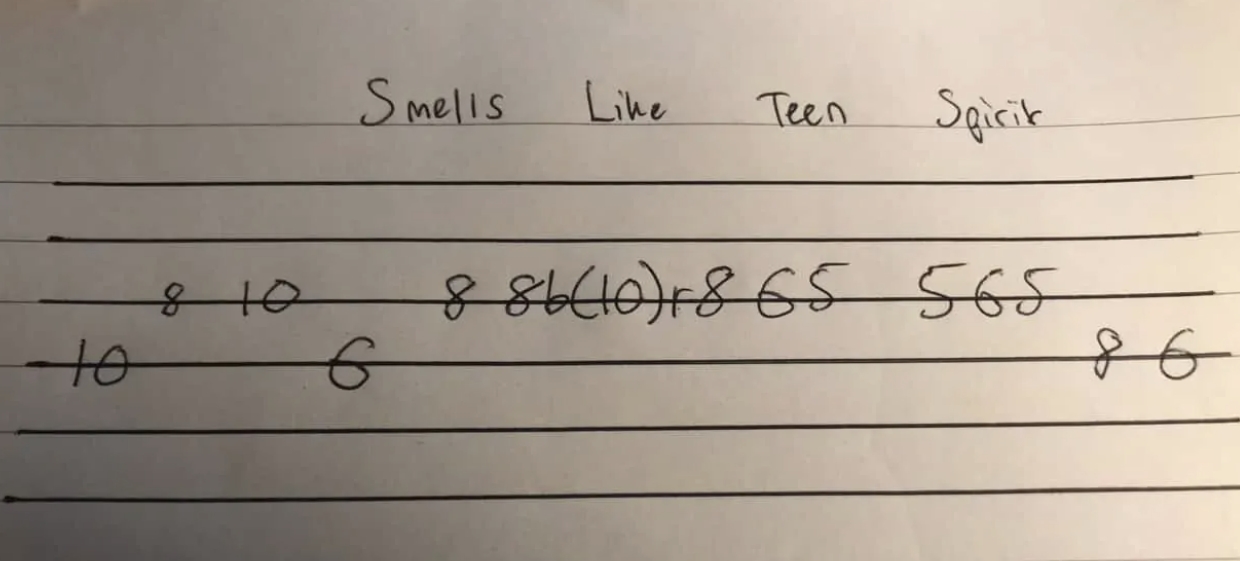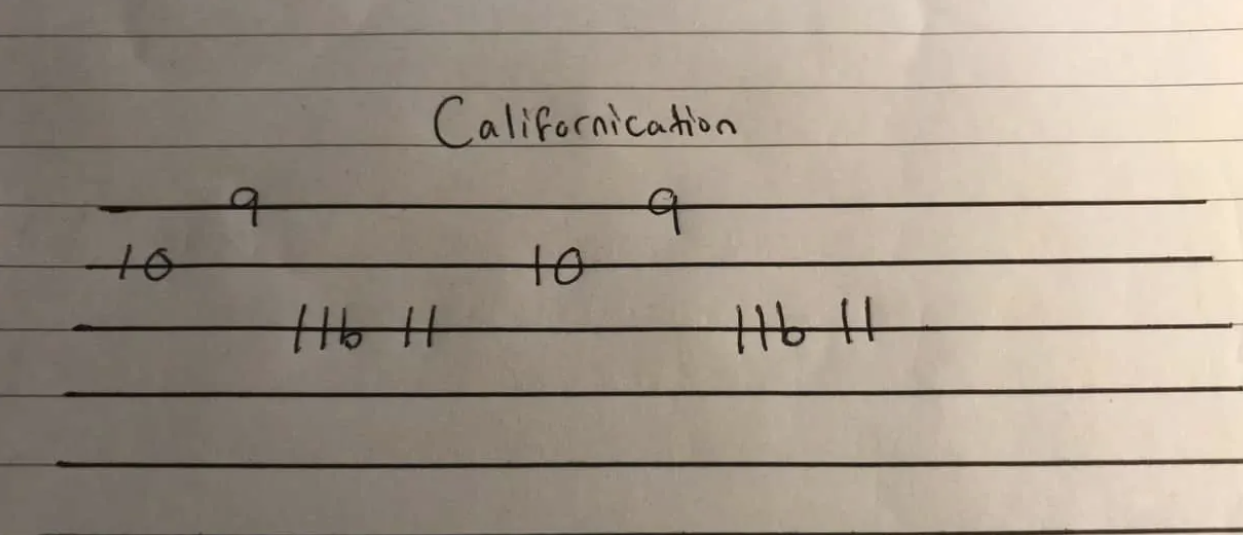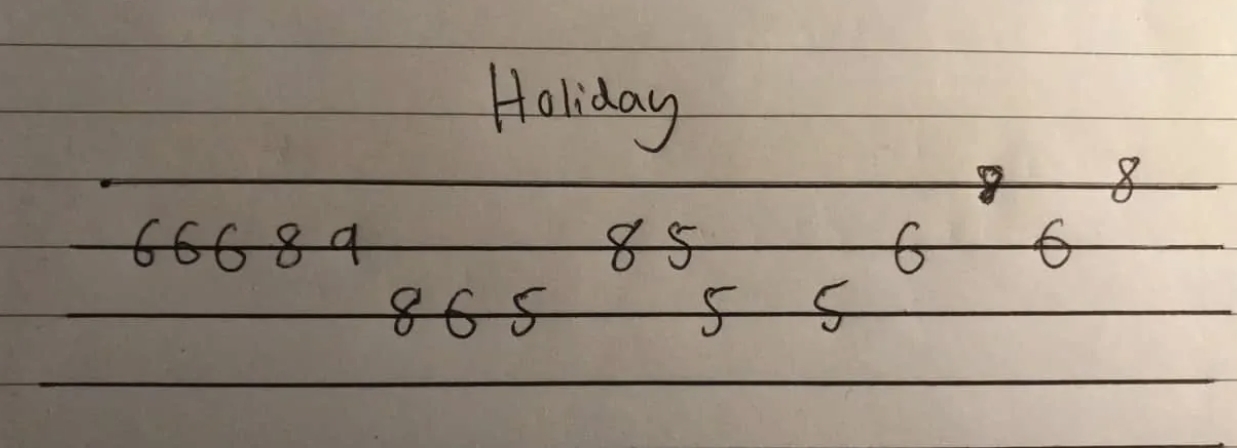At BeginnerGuitarHQ, we aim to help you learn to become a great guitarist. After you’ve got the hang of playing chords, melodies and some advanced techniques, you might want to start taking on some of the guitar solos that catch your ear.
In this important guide, I’ll talk you through some easy guitar solos you’ll be able to learn yourself.
If you’re looking to start playing some of your favourite guitar solos, then look no further…
By this point, you should probably be accustomed to chords, riffs and melodies, but you might not be certain on what actually forms a guitar solo. Effectively, a guitar solo is when a performer takes the focus from a vocalist or other instrument to show off an interesting set of melodies and techniques.
Pretty frequently, guitar solos are improvised. In jazz, for example, you’ll almost never see a pre-written solo, whether it be in a recording or a live show. If you’re going to play improvised solos, you’ll need to work on your own improvisational skills. Check out our guide here.
There are also a fair few solos that are pre-written. You’ll hear these within a lot of rock and metal tracks so that their performers can replicate the exact sound of the record when playing live.
Every now and again, you might hear an improvised solo that ended up so famous and well-loved that the performer had to learn it note for note in order to replicate it live. For example, Dweezil Zappa has learnt, note for note, all of his dads famous xenocronous, improvised solos.
Some of the best guitar solos of all time are, unfortunately, incredibly hard to play. As a beginner, it’s pretty unlikely you’ll be able to pick these up straight away, but I’ve provided a list of some solos that will inspire you to start off slow, learn some more techniques and then come back to tackle these incredibly difficult (but brilliant) solos.
Guns N Roses 'Sweet Child O Mine’. I’m sure you’re familiar with the riff that comes before my favourite solo of all time. The solo itself is trademark Slash, with magical melodic runs and fills creating a memorable and catchy minute of music. There aren’t any particularly extended techniques or complex scales to get used to, but it builds into some really quite fast, complex high neck play which may be pretty complicated to pick up for a beginner. This still, however, shows a learner just what getting a grasp of playing great melodies in a solo can achieve.
Judas Priest 'Painkiller’. The guitar work of KK Downing is one of the most underrated things in music. He might not be a member of Judas Priest any longer, but the impact he had on tracks like ‘Painkiller’ can’t be understated. Alternating between immense periods of shred and some surprisingly melodic moments is an impressive feat, and his guitar tone alone is enough to make this a worth-while listen.
Led Zeppelin 'Stairway To Heaven’. You all know the classic solo in ‘Stairway To Heaven’, as it is voted as one of (if not the) best solo of all time on basically every list you’ll ever see. It opens with one of the best bends in music, and you can learn how to pull stuff like that off below. This solo mostly follows the pentatonic scale, so you won’t need to learn much advanced theory to follow along, but there are some faster moments (especially towards the end) that really take some practice in getting your finger positioning spot on.
Van Halen 'Eruption’. We’ve finally reached a truly masterful, virtuosic solo, straight from the mind of Eddie Van Halen. This short track is dominated by one exceptionally fast solo built around tapping and shredding, showing off the upper limits of human guitar ability. His brilliant tapping makes this a track you should only attempt to take on when your playing ability far outweighs your need to be using beginner guitar guides!
Lynyrd Skynyrd 'Free Bird’. One of the main reasons this one is particularly hard to play as a beginner is because its built on two guitarists often playing at exactly the same time. On top of that, the solo lasts the final five minutes of a ten minute track and is at times very difficult. While you don’t need to worry about shredding, per se, you should be on the lookout for the need to play fast, with a lot of bending, vibrato and a perfect grasp over pull off and hammer on notes.
Below, I’ve included a few tips you might want to pick up on before you take on these solos. We’ve gone into most of them in detail on BeginnerGuitarHQ, so in most cases my explanation is relatively limited, but click on the links and get some more detail!
Improvisation: First things first, you’re going to need to work on your improvisation techniques. This includes getting hold of a relatively firm understanding of musical theory. You’ll need to start figuring out which chord sequences fit what scales, so you can understand what notes will fit your performance. Within this, make sure you remember that various scales and modes can fit various styles. For example, while a pentatonic scale will fit nicely onto a simple chord sequence, it might not work so well over a complex jazzy chord sequence. This could lend more to modality or even some use of the chromatic scale for effect. If you want an extra bright sound, the Lydian mode with its #4th will do you well, while a really dark, intense sound can be created with the heavily diminished Locrian.
Using A Plectrum: Check out our guide to the best plectrums for your playing style. Lighter, thinner picks are a bit harder to use in the course of a particularly complex solo, especially if you’re playing on thick heavy strings. They might work better when you’re a beginner as you’ll find they are a bit easier to move between strings quickly, but I’d personally suggest you try and move yourself onto thicker ones eventually. If you favour the jazz style, then you can also get jazz picks which are much smaller, putting your fingers closer to the strings than a typical pick style. This is all mostly down to personal preference, but you should certainly try using a pick to solo, as fingerpicking is harder to play with speed and dexterity.
Bending: Bending a guitar string does exactly what it says on the tin. You’ll effectively want to press down on your string and move it upwards, which will take your pitch up depending on how much you bend it. This is because it tightens the string- the tighter the string the higher the pitch. In your solos, make sure you remember how much you’re able to bend your guitar strings without breaking them (this is not what you want to happen during a show). Also, take into consideration that bending a lower string isn’t going to sound as good as bending one of the higher strings, but also make sure you know how much to bend it to create which sound. For example, bending is a good way of bringing quarter tones and blue notes into your soloing to give it a cool new lease of life.
Slides: Sliding gives a fresh sound to your playing and means you can connect your notes without having to make staccato jumps between them. You can roll all the way up a string to give a smooth sound, or even just provide a nice effect. This one is pretty easy to get used to, so you won’t need to practice sliding for a long time, but making note of how hard you have to press down on your frets to achieve optimum sliding is encouraged. A subtlety you might also want to look out for is the fact that some guitars will have different length necks, so while one slide might be long enough to take you to your desired fret on one model, it might not be enough on another.
This is a list of 10 of the easiest guitar solos you’ll be able to learn quickly, with a few helpful tabs to get you started with the opening of a few.
Nirvana 'Smells Like Teen Spirit'. This one basically follows the vocal line, so as soon as you’re familiar with that (which you probably are), you’ll get the hang of the rhythms. Most of this one is slow, with no difficult leaps or complex use of bends. It also gets pretty repetitive towards the end. I suppose the hardest thing about it is replicating the anguished tone of Kurt Cobain’s guitar playing. Have a look below for a tab of the opening of the solo so you can give it a shot yourself.

Pixies 'Where Is My Mind'. This one takes the actual difficulty level up a few notches as it starts with two strings being bent at once, which actually may take a little bit of practice. However, considering this is such a short solo, you can put a lot of time into practicing what is essentially just two bars and end up playing a nice sounding, impressive solo with poise.
Eric Clapton 'Wonderful Tonight'. Considering ‘Wonderful Tonight’ is one of the best tracks from one of the greatest guitarists of all time, its short opening solo is pretty easy to get a hold of. Its built on a couple of slightly bent, but slow and easy to reach motives, with a little slide right at the end taking you into the higher register of the guitar. I’m not sure the extent to which you’d call this a guitar solo, but it’s still a nice melody to learn relatively quickly.
Red Hot Chilli Peppers 'Californication'. Now, personally I’m not a massive fan of this solo. I think it’s a little too dissonant to fit the tone of the rest of the track, and its repeating melody isn’t actually that catchy or nice to listen to. However! As a whole, this is a fantastic song. If you’re looking to play this song as a whole, then you’re going to want to learn this solo anyway, even if just for the sake of completion. It’s nice and slow, with a couple of subtle bends meaning you can explore your use of the technique without going over the top with difficulty.

Oasis 'Rock N Roll Star'. While he’s written some of the greatest songs of all time, Noel Gallagher isn’t exactly known for a virtuosic guitar skill. Perhaps this is why it’s pretty rare to see a guitar solo in an Oasis track. When we finally hear this one, it’s a gritty, almost Beatles-like reprise of some of the melodies we’ve heard so far in the track. It’s a little faster than some of those we’ve seen so far, with some chromatic notes adding a bit of flair to its melodic content, but as it repeats some short sections within itself, you won’t have to spend too much time learning intricate sections of music.
Green Day 'Holiday'. The solo in the middle of this upbeat tune is one of the examples of a solo it’s pretty easy to assume was pre-written. It’s made up of an almost militant, clearly picked and on-beat tune which you’ll get used to in a heartbeat. One of the best things about this particular solo is that it’s made from such a catchy, recognisable melody that you shouldn’t have to keep returning to it in an attempt to get used to its sound- it’ll really stay in your head.

White Stripes 'Seven Nation Army'. A fun fact about this track is that there is no bass involved at all. Another fun fact is that as soon as you’ve learnt the ‘bass’line, you’ll be able to play the solo. All you’ll need to is transfer the same rhythm and similar notes up by an octave, and then a second octave on the second phrase. There are a few bends and note changes here and there, but a knowledge of how the play this one will be helped massively just by learning the relatively easy main riff.
Elvis 'Heartbreak Hotel'. Elvis is another one who isn’t necessarily known for his guitar solos, but ‘Heartbreak Hotel’ provides a nice easy one if you’re looking to play through a classic rock n roll tune. While you’re going to be commanding two strings at once throughout, you’ll barely being doing more than that. As you can hear in the track, Elvis’ barely moves from repeating strikes of two high notes in different rhythms before the piano solo takes over.
Arctic Monkeys 'Fluorescent Adolescent'. This one barely counts as a solo because it just reprises the main riff that we’ve already heard, just with the very last note missing at each repetition… Either way, it’s a really catchy little melody which won’t take you long to get used to. As most of it is low down, you’re always going to get a pretty warm, satisfying tone that you might not be able to grasp very well if you’re playing high, vulnerable strings when you’re just a beginner in the world of playing guitar solos.
Pink Floyd 'Wish You Were Here'. This is the hardest solo on the list, as well as the only one played on an acoustic guitar. The solo I’m referring to is the opening, well-known melody, and not the talk-box heavy middle solo. There are a fair few hammer ons, slides, bends and even a bit of playing two strings at once, so it’ll take longer to get used to than those we’ve looked at so far. However, considering how famous this one is, the fact that it’s pretty easy to learn is really satisfying.
Learning solos doesn’t always have to be difficult. The ones above are simple enough to play along with. One day you’ll be able to go on to tackle the difficult, brilliant ones above, or start writing/improvising your own.
Original article reprinted with permission.
Dan Peeke is a music tutor and writer. He has played piano since he was 4, and guitar and drum kit since he was 11.
He plays a Guild acoustic and a Pacifica electric. He has been sent to many festivals and gigs (ranging from pop to extreme metal) as both a photographer and reviewer, with his proudest achievement so far being an interview he conducted with Steve Hackett (ex-Genesis guitarist).
His favorite genre of music is progressive rock, which he likes to use as a reference point in his teaching, thanks to its huge complexity in structure, rhythm and harmony.